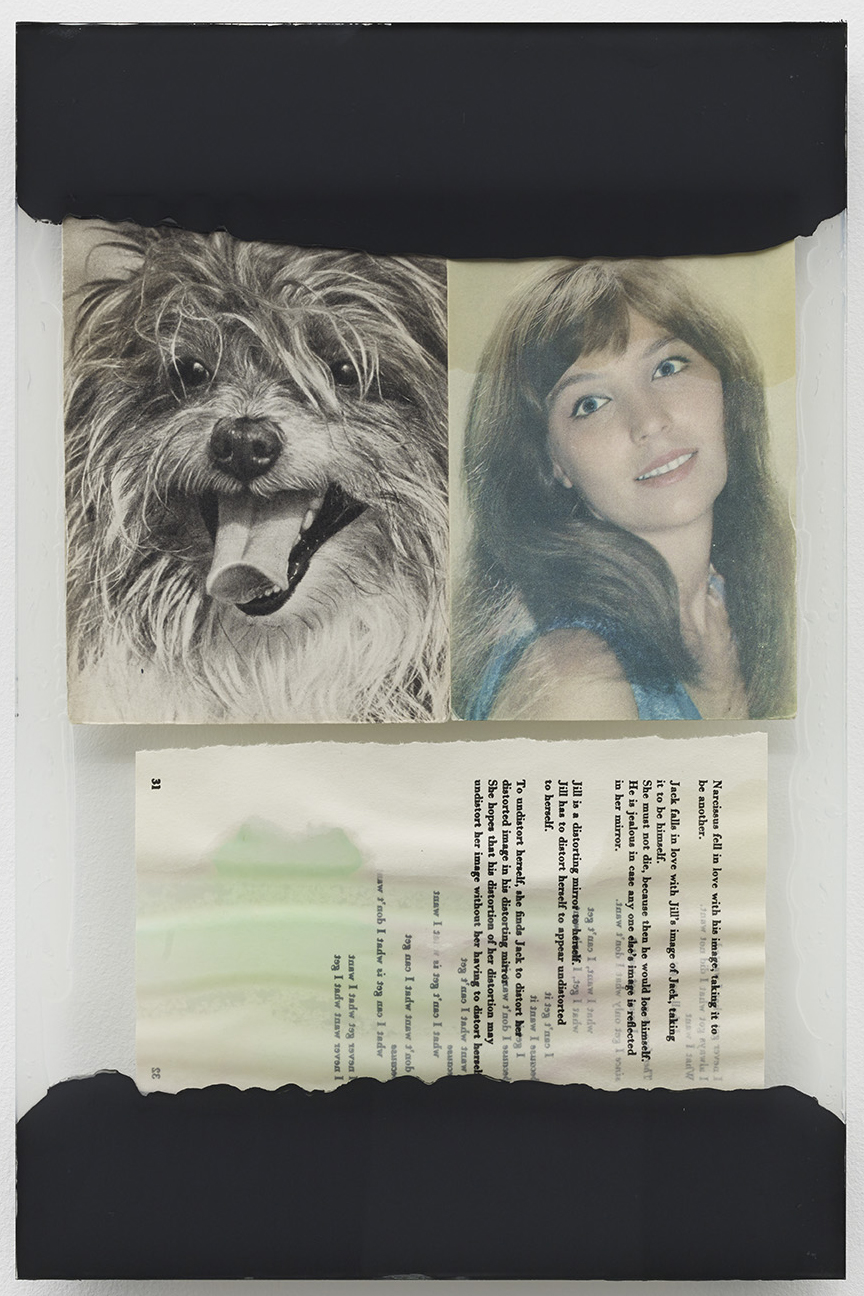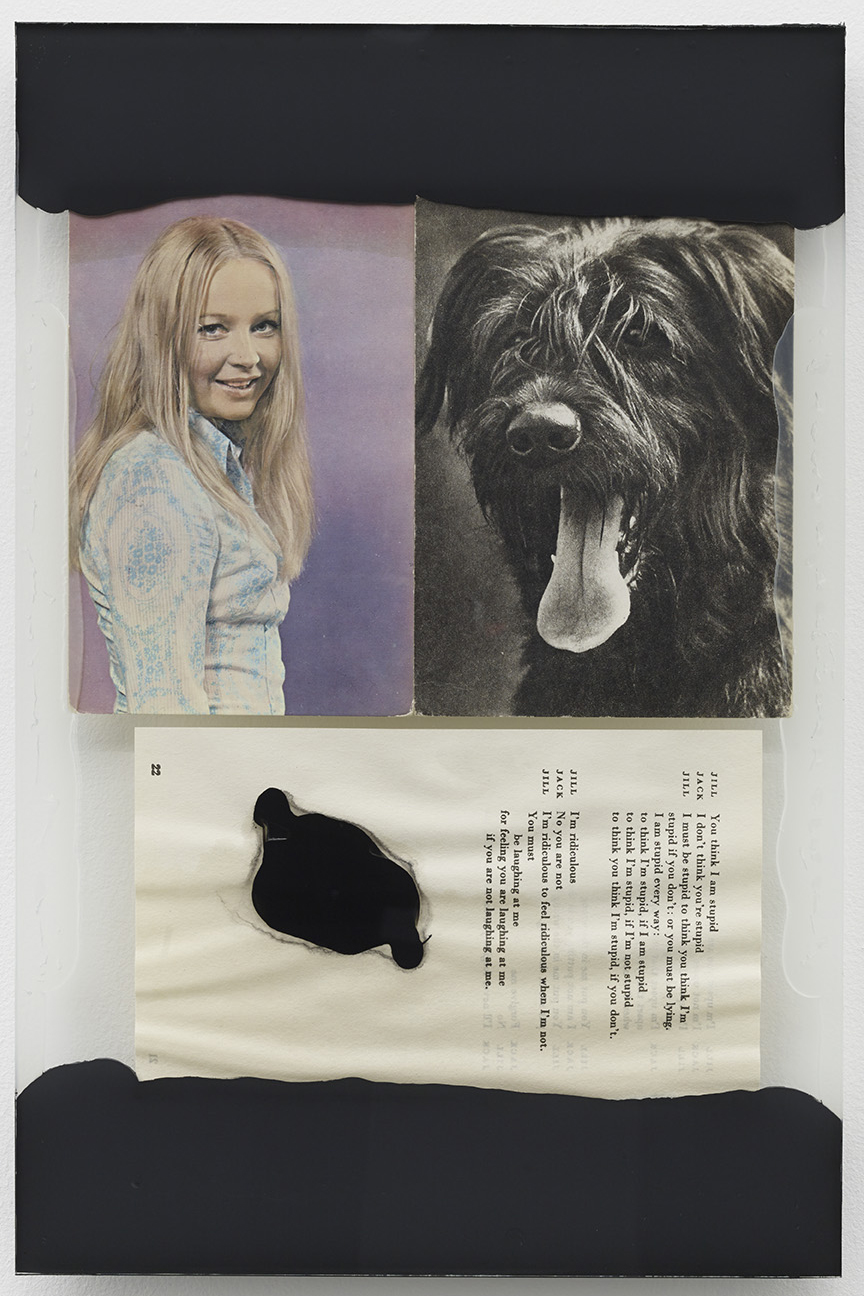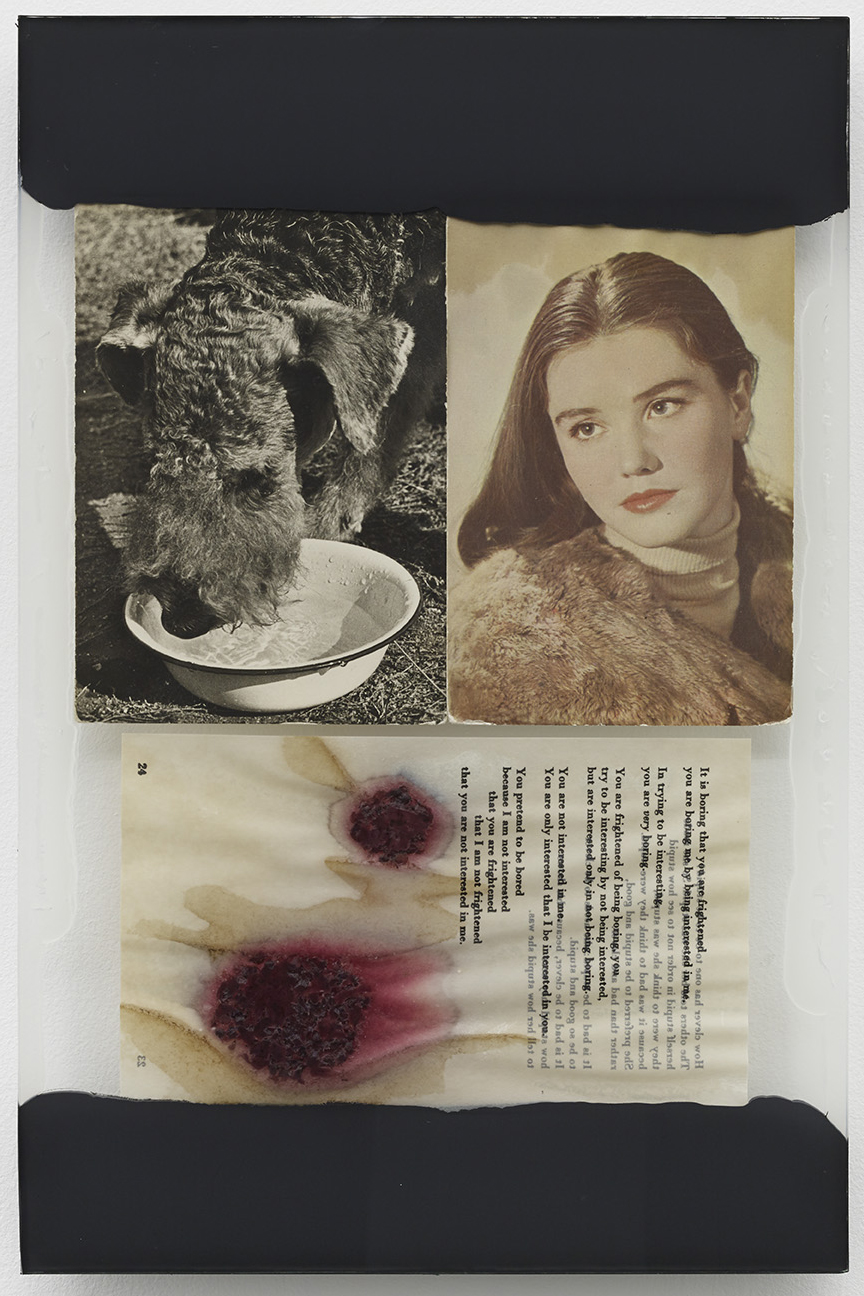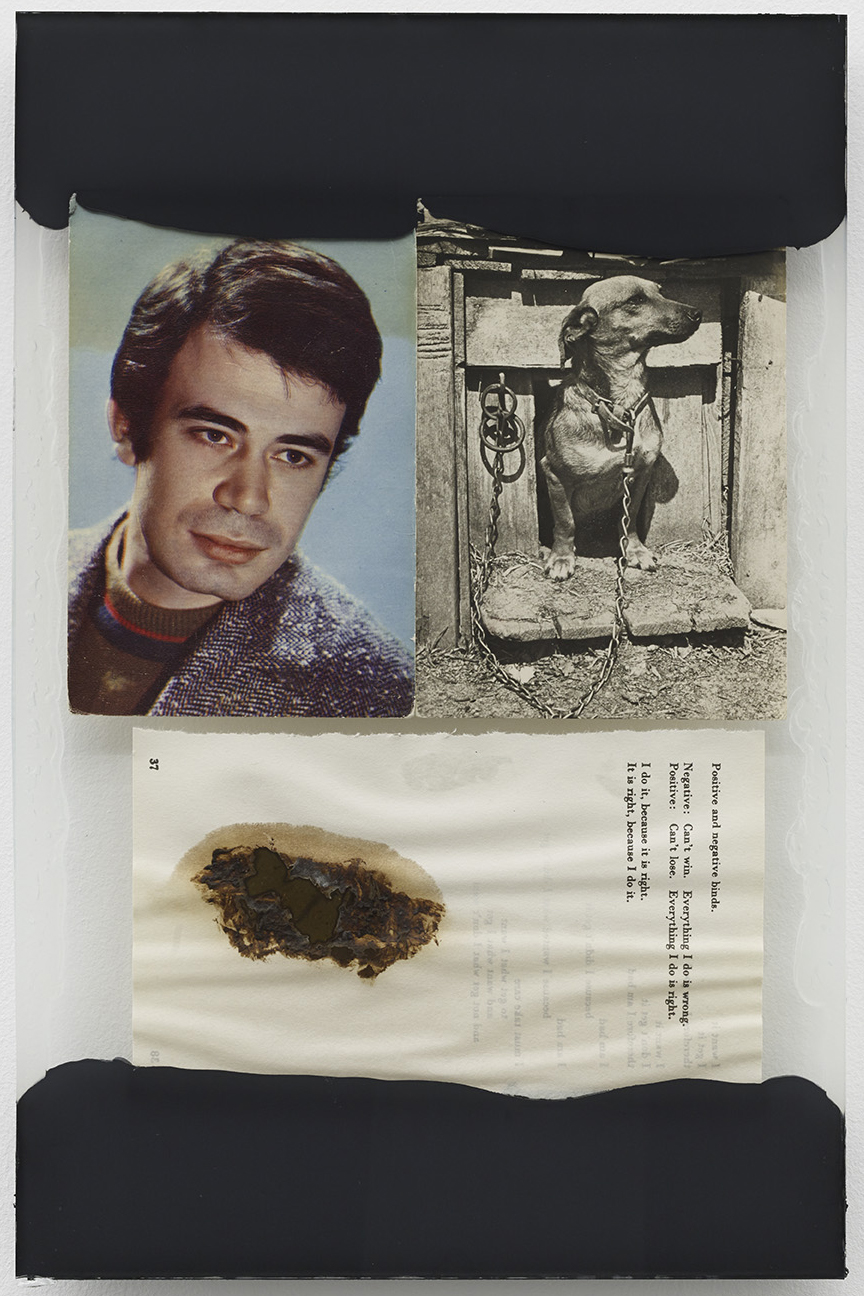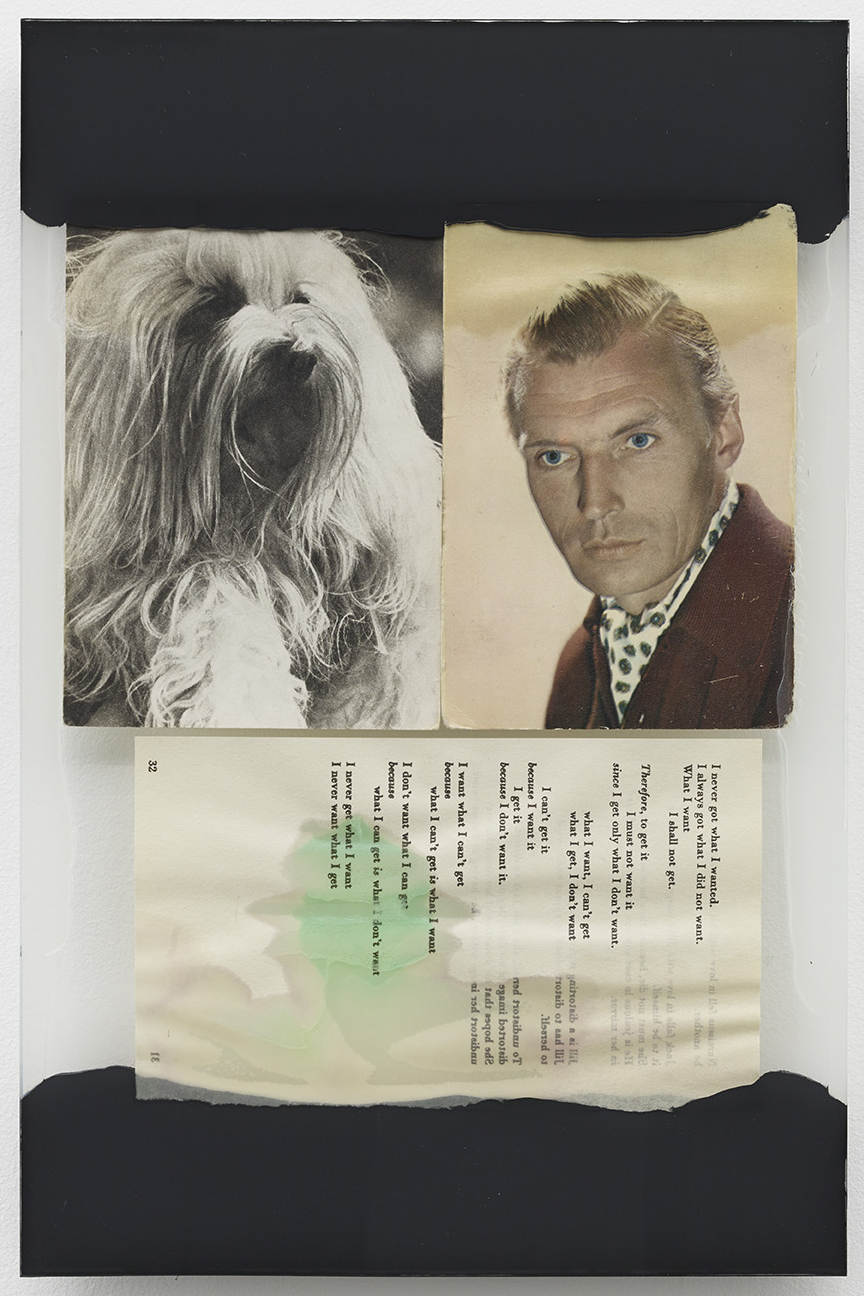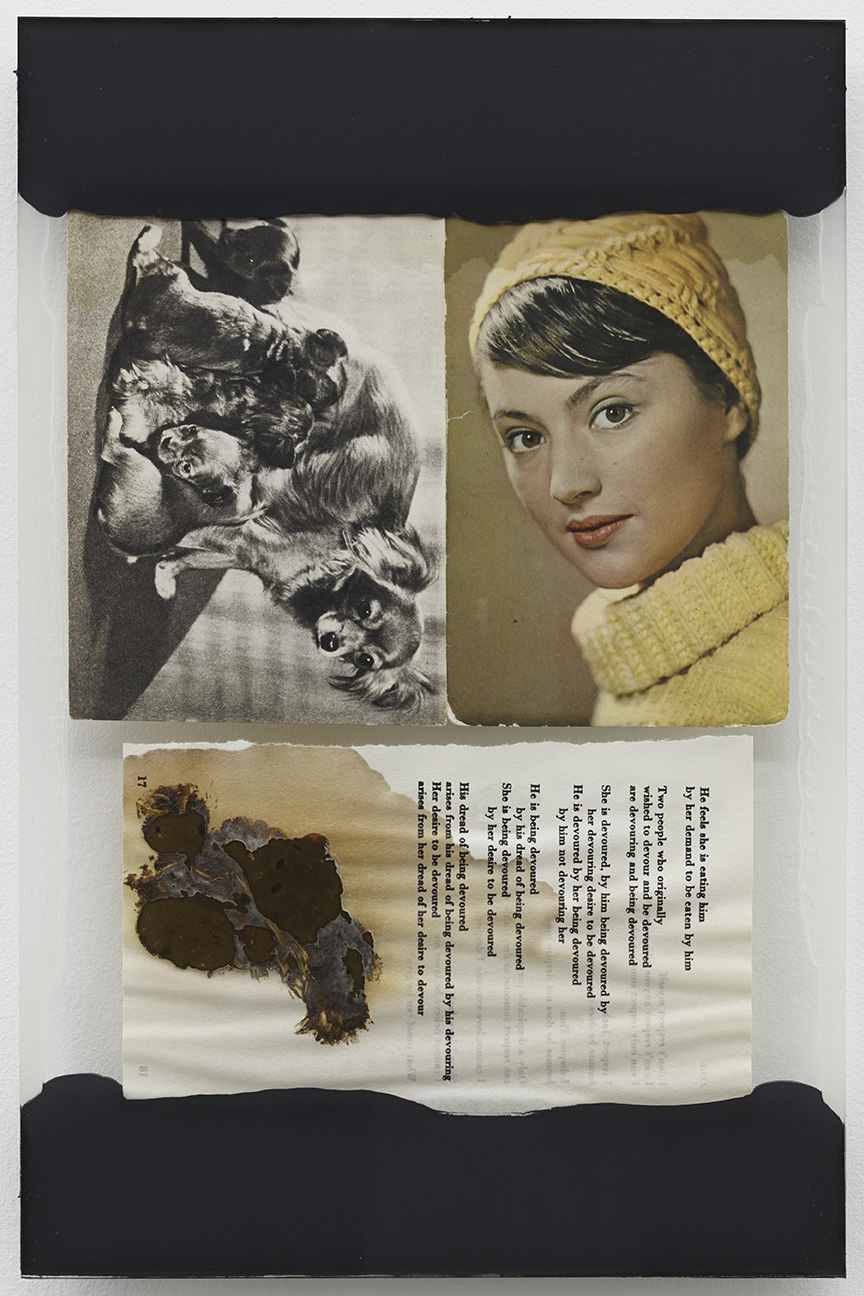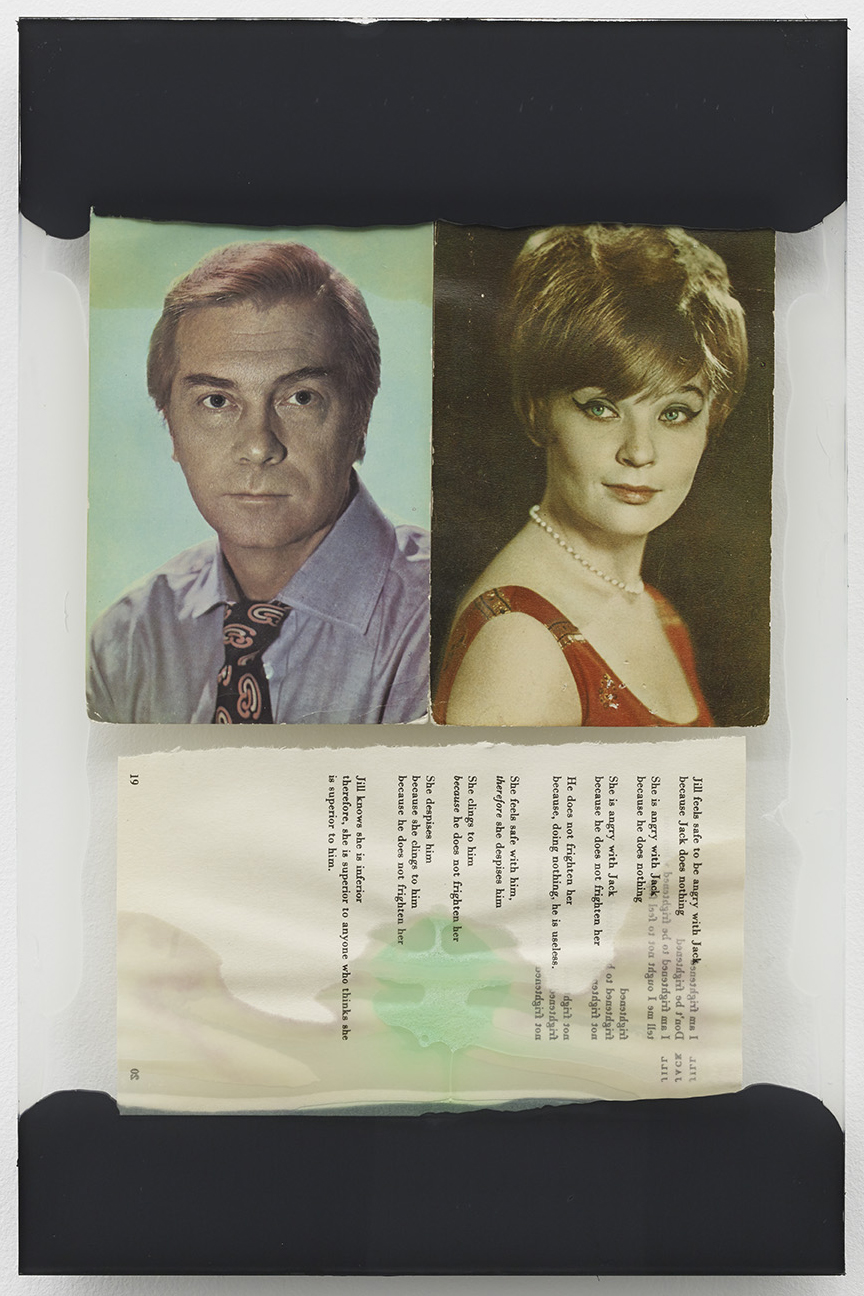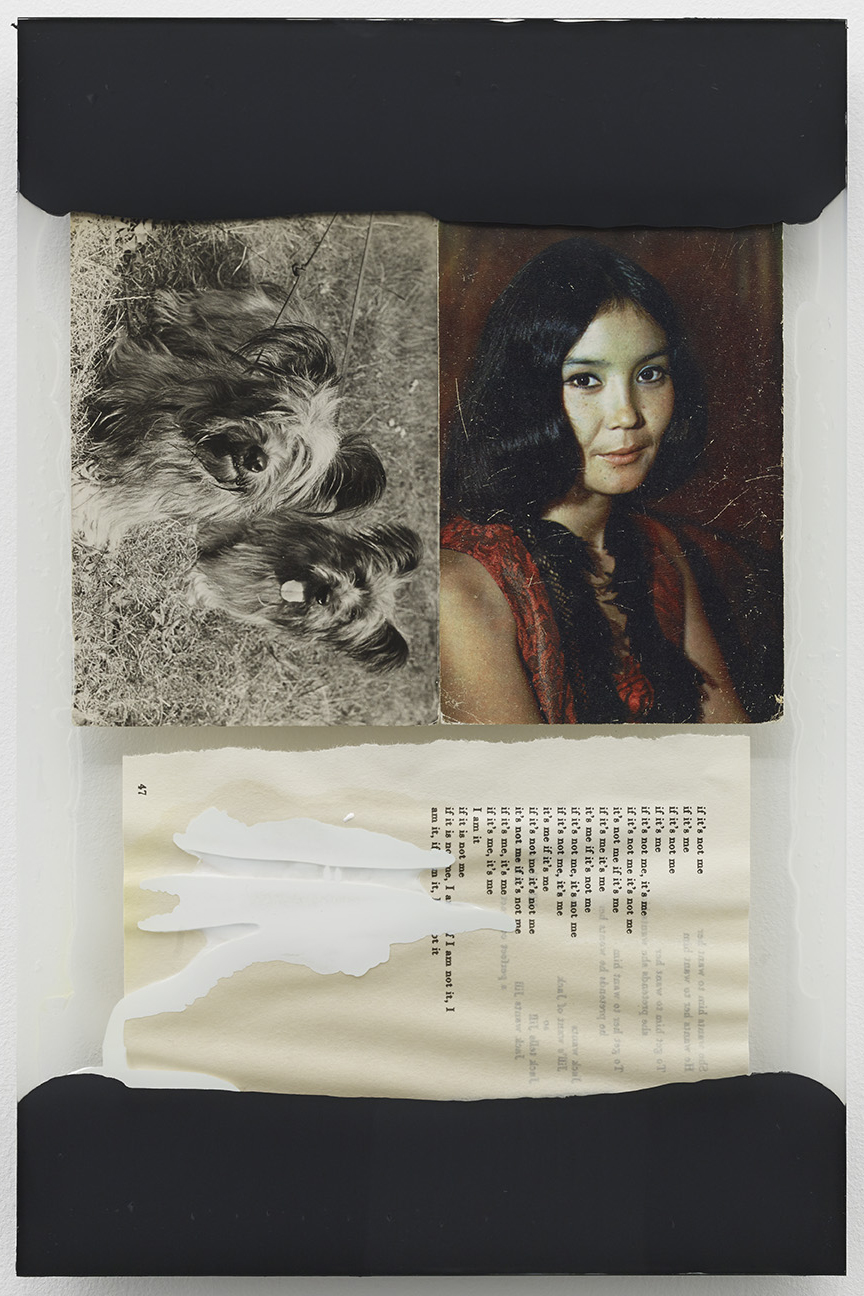The Walk (2016)
Glass, silicone caulk, Soviet postcards, pages torn from R.D. Laing’s ‘Knots’ and assorted stains: soap, food, feces, paint.
32 panels, each 12” x 9”
![]()
![]()
![]()
Leigh Ledare’s The Walk—which might be read in reference to a dog walk, cruising, or even a line up—uses materials associated with consumption, waste and sanitation to parallel psychic and social processes.
Each of its 32 panels contains four elements. This includes two images: A color reproduction of a Soviet character actor, either male or female, taken from a collection of 1960s state issued postcards; paired with a black and white reproduction of a purebred dog from a comparable set of cards. Positioned below these two images, each panel of The Walk also includes one page torn from R.D. Laing’s seminal 1970 book Knots. Based on Laing’s case studies, Knots unfolds through the representation of a series of abstracted internal dialogues, whose voices reveal patterns of neurotic logic that entangle their subjects in specific roles. In each panel this page has been submitted to a stain made through the application of one of four materials: either soap → food → shit, or → paint. These elements are sandwiched between glass and sealed from within using black silicone caulk. Inverting the typical function of the frame, the seal comprises a containment—isolating the stains, while permitting them to actively contaminate the other representations inside the piece. As such, these panels, like petri dishes, comprise cultures in their own right.
By playing depictions of people and dogs off one another, The Walk suggests the identificatory and projective functions that we ask dogs to serve, both symbolically and socially. Whether pampered, worked, played with or abused, dogs are assumed to be unconditional companions. Their status as property is linked to dependency, which ostensibly permits an owner to do to their dog whatever he or she wants. A canine may be forced to tolerate being a receptacle for its owner’s emotional outbursts; or it may be fetishized as a sentimental externalization of its owner’s own personality, quality or taste. Conversely, a loose dog may be feared and dehumanized; defensive, unpredictable or libidinally unbridled, its lack of social accountability may cause it to be seen as a force to be controlled. The Walk invokes this condition of object-ness to propose that human attachments follow a similar set of unspoken laws.
Exceeding the sum of its parts, The Walk suggests representation as a system of projective typing: society casts specific groups to individually embody desirable or undesirable aspects of our collective experience. Just as each actor within The Walk is marked by a stain—a symbol of authorization or discrimination which (hinging on fault lines of gender, race, culture or class) is applied by society; they are also subjected to internalized roles that may be just as divisive. The Walk’s respective stains—soap, food, shit and paint—symbolize specific values: privilege and morality; dependency and nurture; “otherness” and negation; creativity and regression. While elements such as food and excrement are grand levelers in a system corresponding to both the physical and social body, our tendency to disclaim this commonality—and to expel our own undesirable traits by projecting them onto others—proves brutal.
Accentuated by its seriality, the ability to reconfigure The Walk’s panels—and its pairings of people, dogs, behaviors and stains—proposes the seemingly arbitrary and subjective theater through which both self-identity and social organization are staged.
Glass, silicone caulk, Soviet postcards, pages torn from R.D. Laing’s ‘Knots’ and assorted stains: soap, food, feces, paint.
32 panels, each 12” x 9”

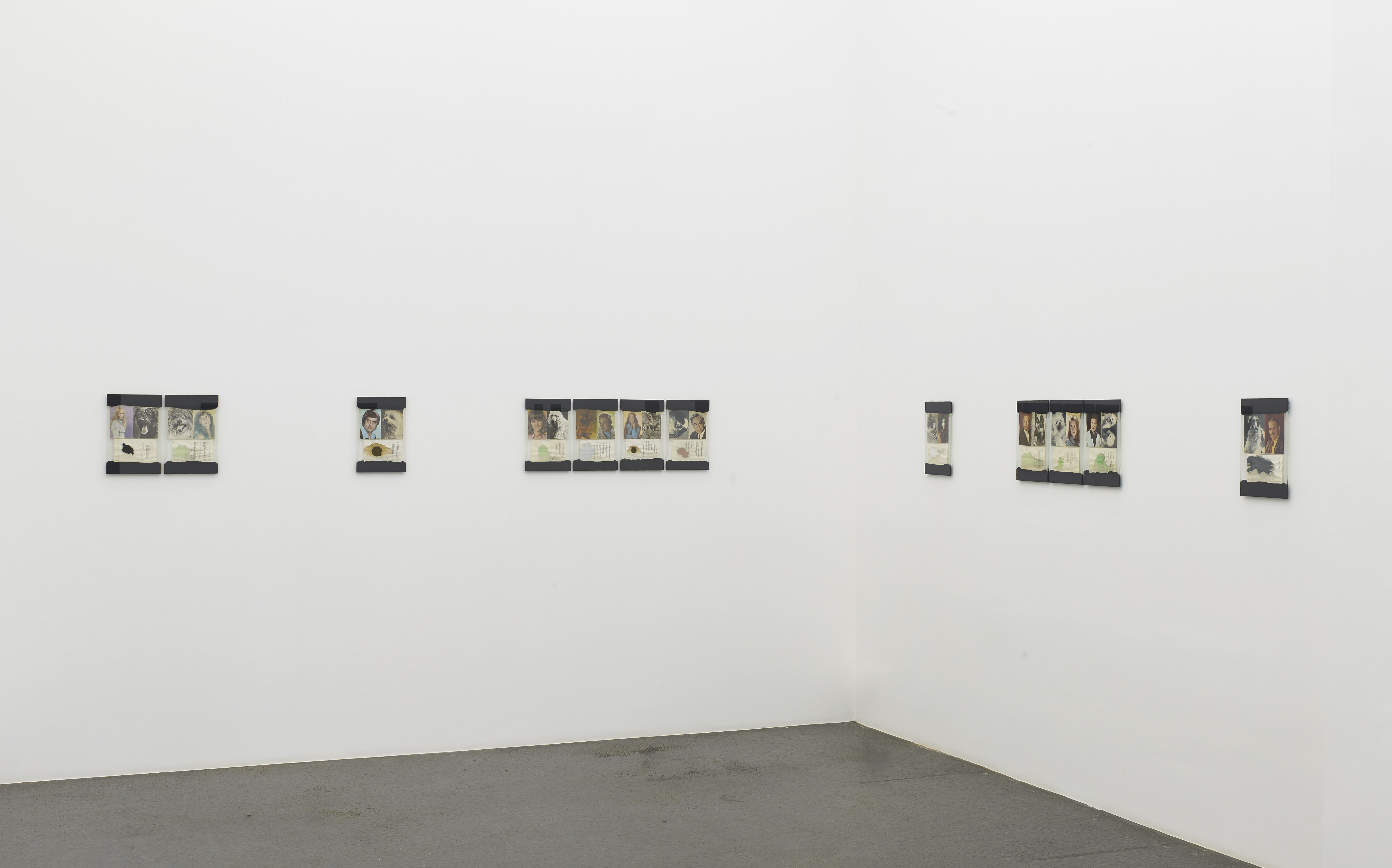

Leigh Ledare’s The Walk—which might be read in reference to a dog walk, cruising, or even a line up—uses materials associated with consumption, waste and sanitation to parallel psychic and social processes.
Each of its 32 panels contains four elements. This includes two images: A color reproduction of a Soviet character actor, either male or female, taken from a collection of 1960s state issued postcards; paired with a black and white reproduction of a purebred dog from a comparable set of cards. Positioned below these two images, each panel of The Walk also includes one page torn from R.D. Laing’s seminal 1970 book Knots. Based on Laing’s case studies, Knots unfolds through the representation of a series of abstracted internal dialogues, whose voices reveal patterns of neurotic logic that entangle their subjects in specific roles. In each panel this page has been submitted to a stain made through the application of one of four materials: either soap → food → shit, or → paint. These elements are sandwiched between glass and sealed from within using black silicone caulk. Inverting the typical function of the frame, the seal comprises a containment—isolating the stains, while permitting them to actively contaminate the other representations inside the piece. As such, these panels, like petri dishes, comprise cultures in their own right.
By playing depictions of people and dogs off one another, The Walk suggests the identificatory and projective functions that we ask dogs to serve, both symbolically and socially. Whether pampered, worked, played with or abused, dogs are assumed to be unconditional companions. Their status as property is linked to dependency, which ostensibly permits an owner to do to their dog whatever he or she wants. A canine may be forced to tolerate being a receptacle for its owner’s emotional outbursts; or it may be fetishized as a sentimental externalization of its owner’s own personality, quality or taste. Conversely, a loose dog may be feared and dehumanized; defensive, unpredictable or libidinally unbridled, its lack of social accountability may cause it to be seen as a force to be controlled. The Walk invokes this condition of object-ness to propose that human attachments follow a similar set of unspoken laws.
Exceeding the sum of its parts, The Walk suggests representation as a system of projective typing: society casts specific groups to individually embody desirable or undesirable aspects of our collective experience. Just as each actor within The Walk is marked by a stain—a symbol of authorization or discrimination which (hinging on fault lines of gender, race, culture or class) is applied by society; they are also subjected to internalized roles that may be just as divisive. The Walk’s respective stains—soap, food, shit and paint—symbolize specific values: privilege and morality; dependency and nurture; “otherness” and negation; creativity and regression. While elements such as food and excrement are grand levelers in a system corresponding to both the physical and social body, our tendency to disclaim this commonality—and to expel our own undesirable traits by projecting them onto others—proves brutal.
Accentuated by its seriality, the ability to reconfigure The Walk’s panels—and its pairings of people, dogs, behaviors and stains—proposes the seemingly arbitrary and subjective theater through which both self-identity and social organization are staged.
